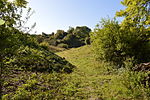St Mary's Church, Ashwell, Hertfordshire

The Church of St Mary the Virgin in Ashwell, in the English county of Hertfordshire, is the Anglican parish church for the village. It comes under the Diocese of St Albans and is one of the largest village churches in the county. The Church is part of a wider benefice, together with St Nicholas', Hinxworth and St Vincent's, Newnham, and the Rector of all three parishes is Reverend Christine Campbell, who was licensed to the parishes in September 2021. As a village church in the heart of the community, St Mary’s exists "to welcome everyone and share the love and life of Christ with all, through our worship, teaching and life together, now and into the future".The church dates almost entirely from the 14th century and is renowned for its ornate tower which stands at 176 feet (54 m) and which is crowned by an octagonal lantern with a leaded flèche or spire. The church also contains some medieval graffiti carved on its walls which highlights the plight of survivors of the bubonic plague pandemic known as the Black Death. The church has been Grade I listed since 1968.Today St Mary's is a popular venue for music concerts and festivals, including the Ashwell Music Festival.
Excerpt from the Wikipedia article St Mary's Church, Ashwell, Hertfordshire (License: CC BY-SA 3.0, Authors, Images).St Mary's Church, Ashwell, Hertfordshire
Mill Street, North Hertfordshire
Geographical coordinates (GPS) Address External links Nearby Places Show on map
Geographical coordinates (GPS)
| Latitude | Longitude |
|---|---|
| N 52.04195 ° | E -0.154 ° |
Address
St Mary (Ashwell Parish Church)
Mill Street
SG7 5LY North Hertfordshire
England, United Kingdom
Open on Google Maps










